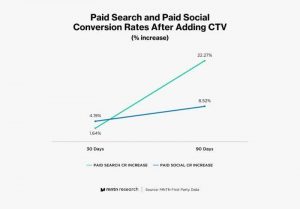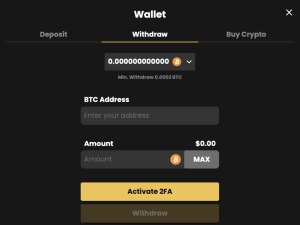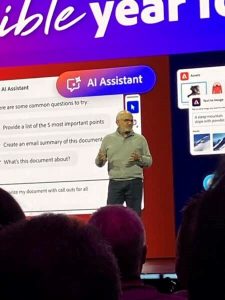
Every SEO specialist needs to get a good grasp of building links. Google, the world’s largest search engine, is designed to crawl and index webpages with an aim to provide the best search results. How does Google choose which among the billions of pages online deserve the top spots?According to its website, the search engine’s algorithms “rely on more than 200 unique signals or ‘clues’” such as keywords, the freshness of content, and PageRank. These signals make it possible for Google to return the best results per query.
The Two Sides of Link Tags
In boosting your SEO, it’s essential to know how to make proper use of a link tag, which provides a “clickable area” on a page that users can use to move to another page. However, not all links work to your page’s favor. Take note of the distinction between a do-follow link and a no-follow link. Do-follow links are links that count as points and boost page ranking while no-follow links, as the term implies, do not add value to the page as far SEO is concerned. It’s basically a notice for search engines saying “don’t count this.” Examples of no-follow links include robots, meta tags and link attributes.
Manually Decipher No-Follow Links
There’s a simple way of identifying the do-follow and no-follow status of links in your webpages. If you’re using Chrome, go to the navigation bar and click View>Developer>View Source. For Mozilla Firefox, simply Right-Click>View Page Source. Do an Edit>Find and key in “nofollow” in the search box. All no-follow tags will be highlighted for your easy reference.
SEO Tools For Your Link Tag Hunting
If you’re managing a lot of web pages, you can make your job a lot easier by using tools in identifying link tags. Here is a quick list:
How to check no-follow links? NoFollow outlines no-follow links, <noindex> HTML tags and optionally all links on pages with no-follow or noindex robot meta tags. It shows meta tags for googlebot (Google), slurp (Yahoo), msnbot (Bing) and teoma (Ask). It also enables you to customize your own CSS styles for outlining. NoFollow is available for Chrome, Opera, and Safari.
User review: “Been using this plug-in for a while. Really useful.” – Brian Scott
- NoFollow Simple
This extension for Chrome outlines all no-follow links on web pages. NoFollow Simple is pretty straightforward. You just need to install it and let it work automatically.
User review: “This plug-in shows all no-follow links in red which is very useful.” – Preston Miller
- NoFollow SEO Link Highlighter
One of the extensions to use in checking no-follow links is Wayfair’s NoFollow SEO Link Highlighter. It allows you to highlight links that direct to any of your domains using a color of your choice. The highlighting feature can be turned on and off for different sites. This extension is available for Chrome.
User review: “This made my work checking no-follow links and brand mentions a lot easier. A great tool for online marketers.” – Jessica Woodbury
NoDoFollow is an extension for Mozilla Firefox. It highlights links in a page and color codes them and a do-follow or no-follow link.
User review: “I’m glad this plugin still works with any latest version of Firefox. This is a very useful add-on for me when spotting no-follow or do-follow links both in my website and off sites.” – Alex N. Dawson
No-Follow Links Are Not The Villains You Think They Are
Although no-follow links give you no SEO point, they can still provide referral traffic. Remember that aside from PageRank, Google uses a number of signals or clues to determine which pages to return to users. A quality content, no-follow or not, can lead to huge traffic to your website. Moreover, regardless of its status, a link that is relevant to your business and target audience can help build your brand.
A perfect instance when no-follow links can be beneficial to you is illustrated in websites with a Wikipedia link, which has a no-follow status. Gianluca Fiorelli of IloveSEO noted: “I dug into that link and discovered that it was to a post about the Welsh immigration in Patagonia present in that site’s blog. Is that link sending traffic to the site? Probably not at all, but it was noticed by someone in the BBC website, who finally linked to that same post citing Wikipedia. Boom, now that travel site not only has one link from Wikipedia, but it has also an important backlink from another trusted seed: the BBC.”
Help Google Help You
Understanding the importance of link tags is essential in your SEO strategy. However, there are other factors that you should take note as a webmaster. One of these is the set of quality guidelines that help Google find, index, and rank sites. Basically, your pages should be created for real users. There are countless webpages solely created for search engines that only add up to the piling junk in the Web. Google suggests that you ask yourself this question: “Does this help my users? Would I do this if search engines didn’t exist?” Create unique and interesting content that will catch the attention of your target audience.
How can you help Google help you and your SEO? Place keywords that typical users would type to find your pages; design your site to have a clear conceptual page hierarchy; and check the advertisement links on your pages to make sure they do not affect search engine rankings. Moreover, although Google is able to crawl HTML content in less accessible pages in your site, it’s still necessary that you make the most important information visible by default.
SEO is the core of your digital marketing. Businesses, regardless of the sector, are beginning to acknowledge the power of a well-planned and intelligently executed SEO strategy. If you’re a newbie in the field, you’re in for an exciting ride as the SEO realm is one that develops over time. It’s your job to track and navigate its path.
Digital & Social Articles on Business 2 Community(29)
Report Post







